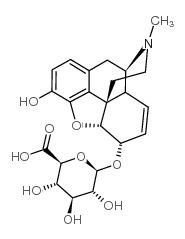Contribution of morphine and morphine-6-glucuronide to respiratory depression in a child.
J A Hannam, B J Anderson
Index: Anaesth. Intensive Care 40(5) , 867-70, (2012)
Full Text: HTML
Abstract
A morphine plasma concentration/respiratory rate relationship has been described for both adults and children although that of its metabolite, morphine-6-glucuronide, remains uncertain. We describe this relationship in a child with end-stage renal failure who received repeat morphine administration over two days. An EMAX model for additive morphine and morphine-6-glucuronide respiratory effects described respiratory rate better than models describing either alone. Failure to clear morphine-6-glucuronide renally led to respiratory depression episodes occurring later than those predicted by modelling morphine levels only. These findings support the use of alternative analgesics (e.g. fentanyl) that are cleared by non-renal pathways and have no active metabolites in patients with end-stage renal disease.
Related Compounds
| Structure | Name/CAS No. | Molecular Formula | Articles |
|---|---|---|---|
 |
M-6-G TRIFLUOROACETATE-HYDRATE
CAS:20290-10-2 |
C23H27NO9 |
|
Morphine glucuronidation increases its analgesic effect in g...
2014-07-30 [Life Sci. 109(2) , 104-10, (2014)] |
|
[Rapid opiate detoxification under anesthesia (RODA)].
2013-01-01 [Rev. Med. Liege. 68(5-6) , 298-302, (2013)] |
|
[Blood-brain barrier transport of opioid analgesics].
2011-01-01 [Yakugaku Zasshi 131(10) , 1445-51, (2011)] |
|
Investigation of morphine and morphine glucuronide levels an...
2012-07-10 [Forensic Sci. Int. 220(1-3) , 6-11, (2012)] |
|
Effect of 12-oxochenodeoxycholate on the pharmacokinetics an...
2013-04-01 [J. Pharm. Pharmacol. 65(4) , 561-6, (2013)] |